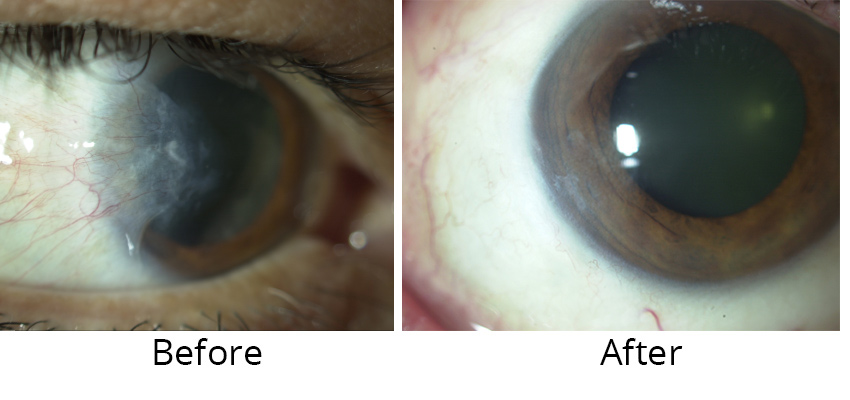
(305) 442-0066
Hialeah Office
North Miami Office

A pterygium is a benign condition produced by chronic exposure to UV radiation. It produces an abnormal conjunctival (skin over the white part of the eye) growth that involves the cornea (clear window of the eye) usually in the nasal aspect. As the lesion grows it produces chronic redness, itching, burning, light sensitivity and eventually blurring of the vision. Pterygium formation can be prevented by the judicious use of UV 400 rated protective sunglasses when outdoors. Finally the use of artificial tears may help alleviate the initial symptoms of pterygium irritation but are commonly ineffective once the condition progresses beyond the initial stages.
Older treatment techniques involved removal of the lesion with direct closure. These techniques had a very high recurrence rate of almost 40%. In many cases the pterygium grows back with a more aggressive behavior inducing significant scarring and even eye motility problems. In order to reduce this high recurrence rate radiation using beta-therapy was employed in many centers. These techniques produced significant scleral thinning and cataract formation and have been abandoned.
Our specialists perform pterygium surgery employing the most advanced surgical techniques including the use of limbal conjunctival autografting, fibrin glue and amniotic membrane grafting in some cases. These modern techniques result in an excellent cosmetic appearance and a reduced recurrence rate of less than 5%.

2441 SW 37th Avenue
Miami, FL 33145
(305) 442-0066

202 E 49th Street
Hialeah, FL 33013
(305) 442-0066

2050 NE 163rd Street North
Miami Beach, FL 33162
Direct Line (786) 708-8372